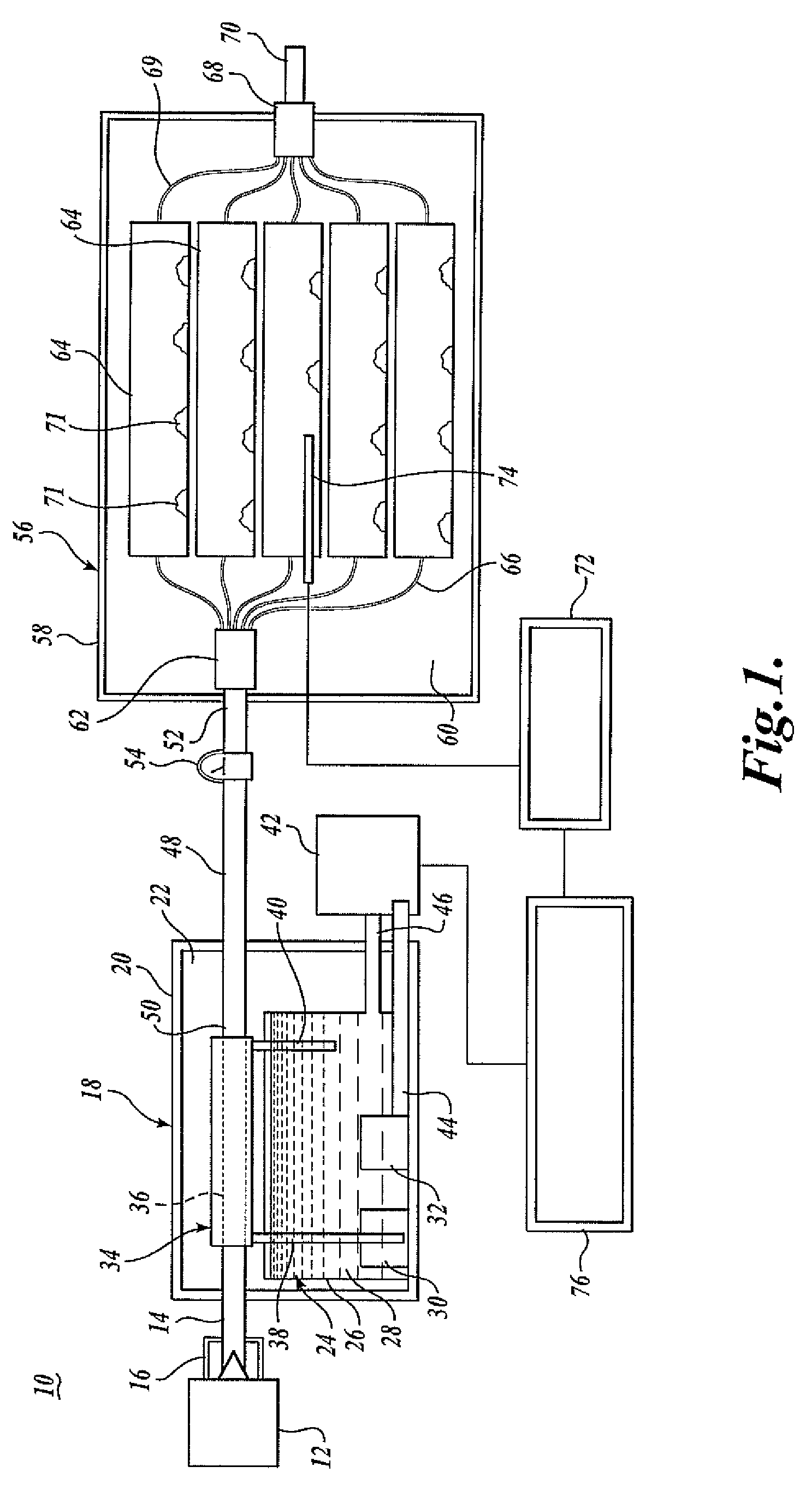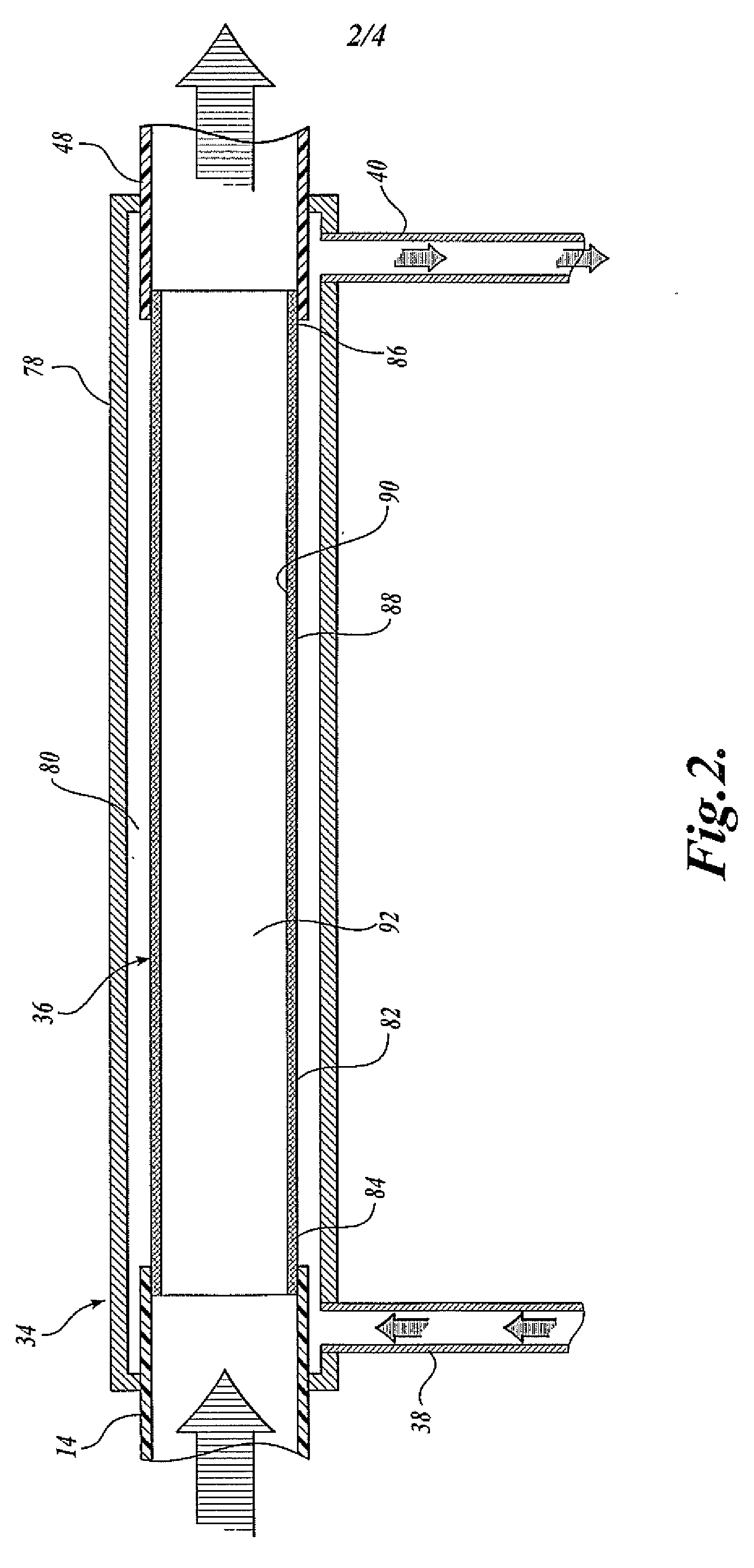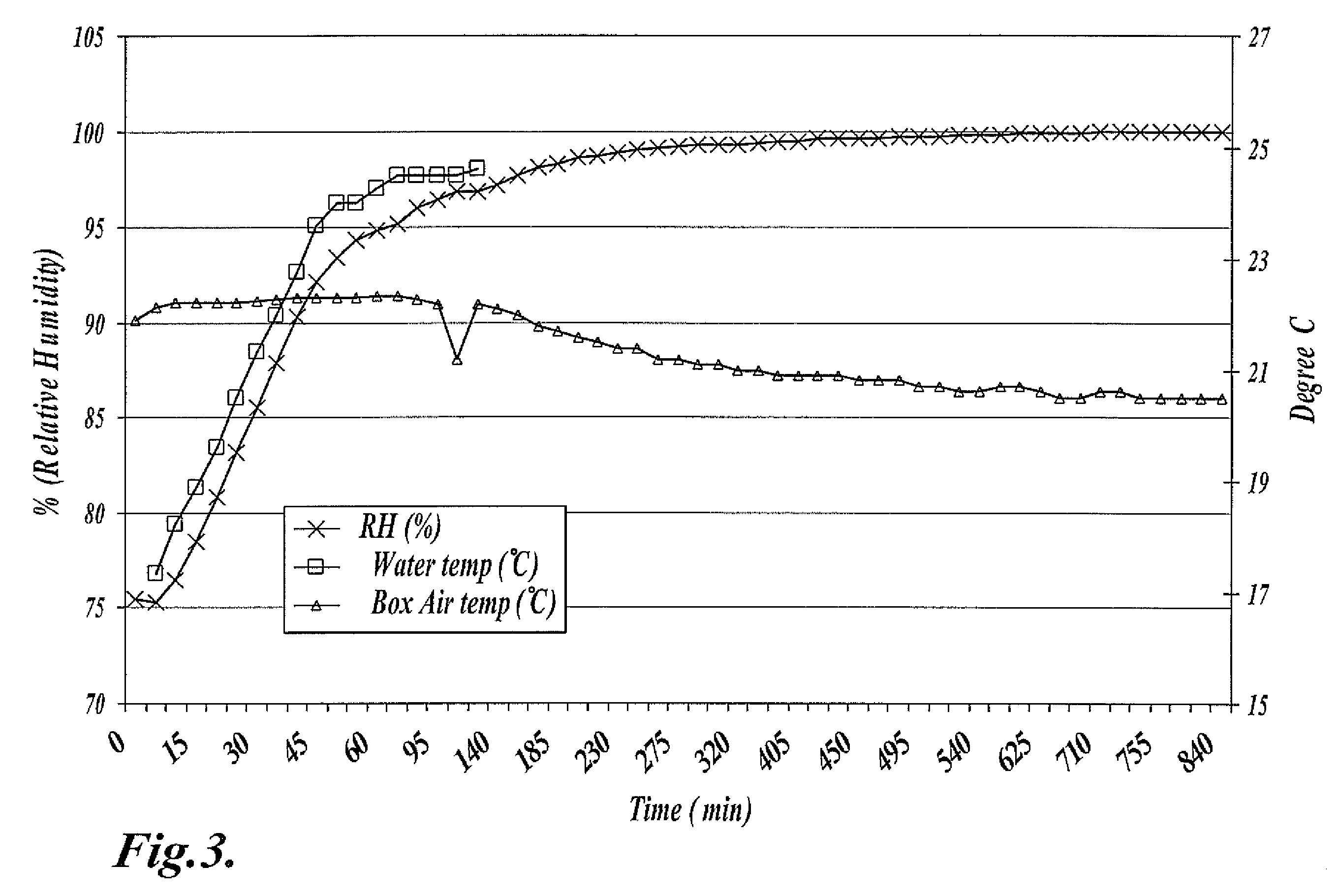Methods for conditioning plant somatic embryos
a somatic embryo and conditioning technology, applied in the field of plant somatic embryo conditioning, can solve the problems of difficult control of the amount of dehydration of the embryo, low germination efficiency of the somatic embryo population, etc., and achieve the effect of improving the germination rate of the somatic embryo and promoting physiological maturation
- Summary
- Abstract
- Description
- Claims
- Application Information
AI Technical Summary
Benefits of technology
Problems solved by technology
Method used
Image
Examples
example 1
[0033] This Example describes the system used to obtain the results shown in FIG. 3 which shows that an increase in the temperature of water flowing around a Nafion® tube causes a corresponding increase in the relative humidity of gas flowing out of the Nafion® tube.
[0034] The following system was used in this and subsequent Examples, unless stated otherwise. A controlled water temperature bath system was built using a Teclima Micro chiller / heater / controller (Fritz Industries, 500 Sam Houston Rd., Mesquite, Tex. 75149). Temperature stability was achieved by using a large thermal mass of water (4 gallons) and by placing the water in a 5 gallon water can that sat in a well insulated cooler. Water was moved through the Teclima heater / chiller using a standard aquarium pump (Aquarium Systems Mini-Jet 606) that provided a flow rate of about 60 gallons per hour.
[0035] Water was pumped through the Nafion® system using a separate Mini-Jet pump which provided a fast drip of water through a ...
example 2
[0038] In this example, the system described in Example 1 was used to generate the data shown in FIG. 4, which shows that a decrease in the temperature of water flowing around the Nafion® tube causes a corresponding decrease in the relative humidity of gas flowing out of the Nafion® tube and into the half Cambro box. In this test gas flow was 1 liter / min, water bath was (˜4 gallons), and the water temperature set point was changed from 29° C. to 20° C. The relative humidity of the gas was not affected until the temperature of the water flowing around the Nafion® tube was reduced to below the temperature of the gas in the half Cambro box.
example 3
[0039] This Example demonstrates how the combination of the relative humidity of a gas stream and the flow rate of the humidified gas can modulate plant somatic embryo moisture content within a 24 hour period.
[0040] The experiments reported in this example used a modified version of the system described in Example 1. A multiplexed Nafion tube PH-30T-12PS (Perma Pure Inc, Toms River, N.J.) was used which greatly increased the surface area for water exchange under high gas flow rates. The aquarium pump was replaced with building forced air that had a moisture content of about 10%, or less, and provided much greater flow rate. The embryo conditioning box was contained in a Styrofoam box to reduce the effect of room temperature changes on chamber temperature. An electronic controller was added to control water bath temperature so that a pre-programmed temperature differential would exist between water bath and conditioning box. In these experiments, sterile filters were not used becaus...
PUM
| Property | Measurement | Unit |
|---|---|---|
| Temperature | aaaaa | aaaaa |
| Temperature | aaaaa | aaaaa |
| Fraction | aaaaa | aaaaa |
Abstract
Description
Claims
Application Information
 Login to View More
Login to View More - R&D
- Intellectual Property
- Life Sciences
- Materials
- Tech Scout
- Unparalleled Data Quality
- Higher Quality Content
- 60% Fewer Hallucinations
Browse by: Latest US Patents, China's latest patents, Technical Efficacy Thesaurus, Application Domain, Technology Topic, Popular Technical Reports.
© 2025 PatSnap. All rights reserved.Legal|Privacy policy|Modern Slavery Act Transparency Statement|Sitemap|About US| Contact US: help@patsnap.com



